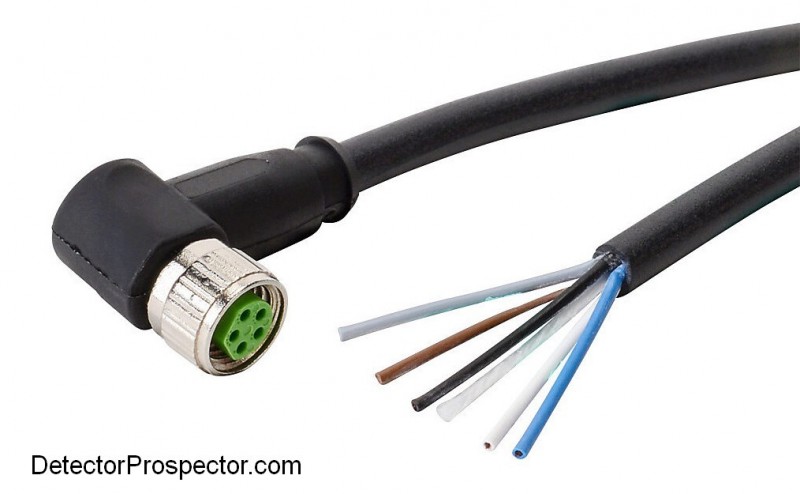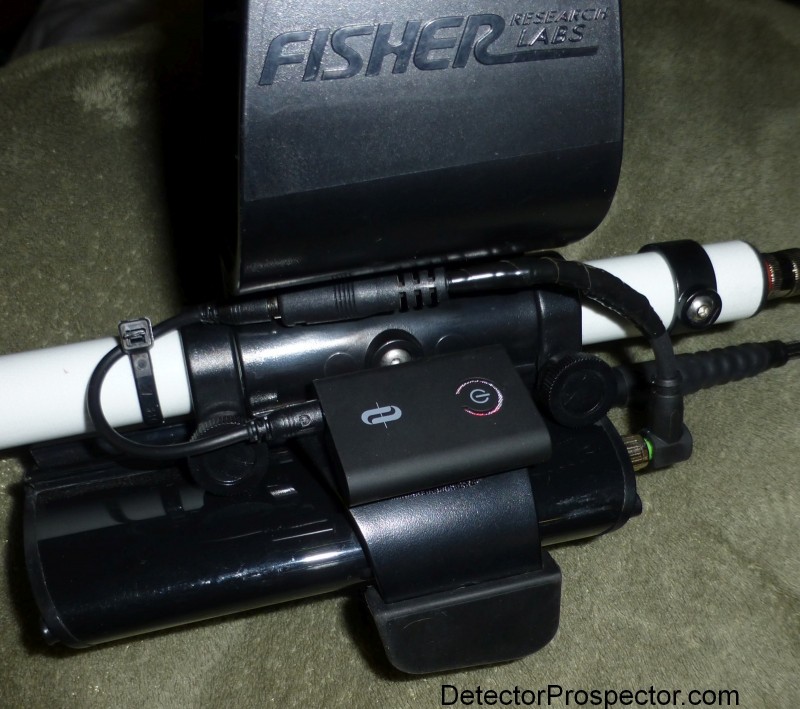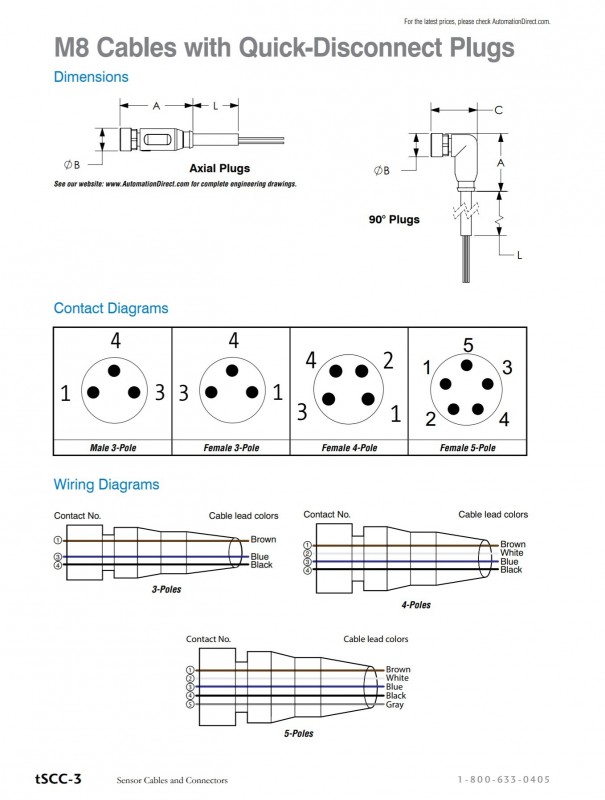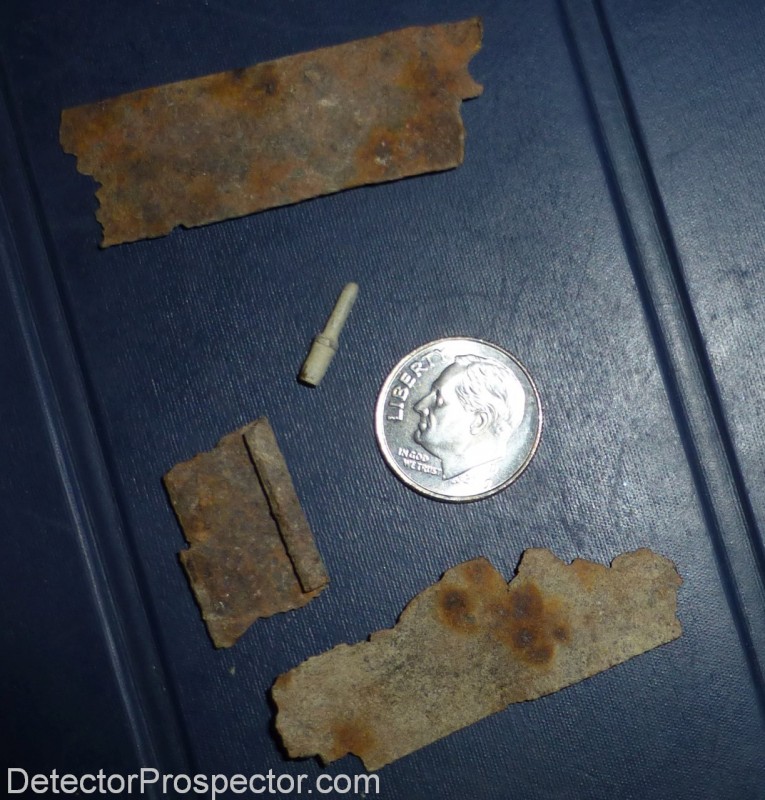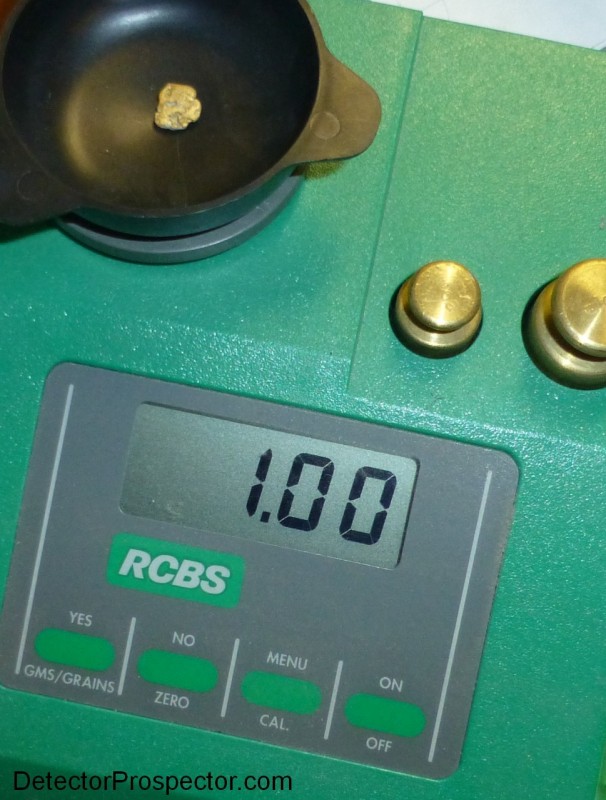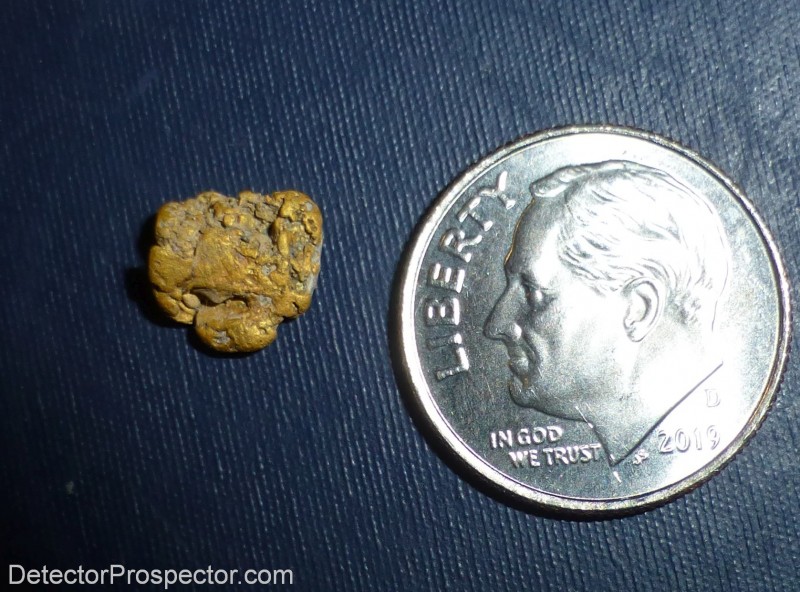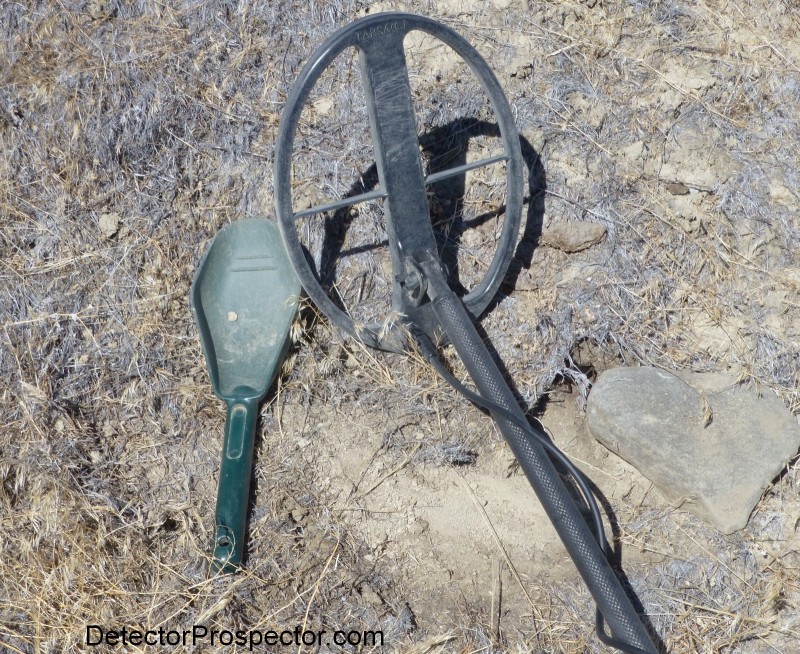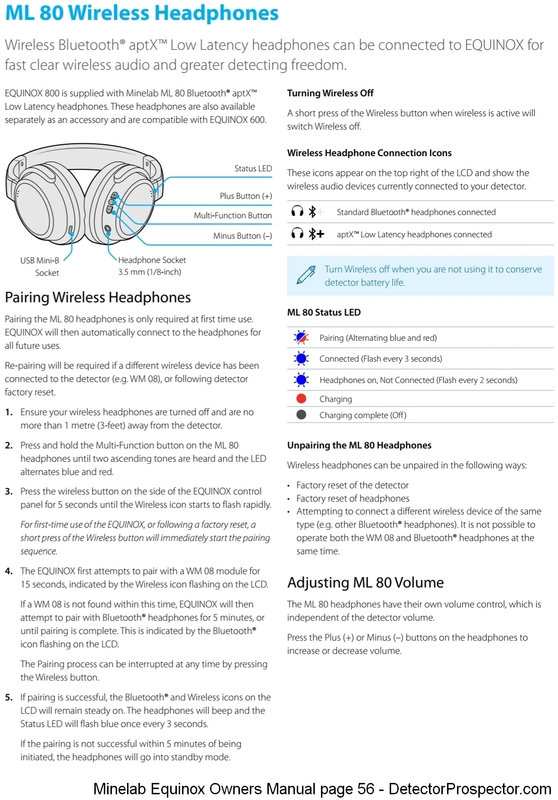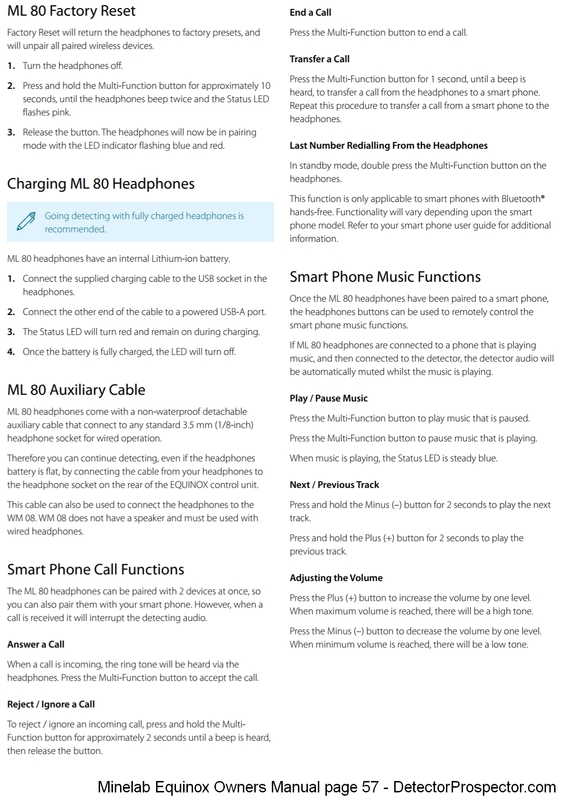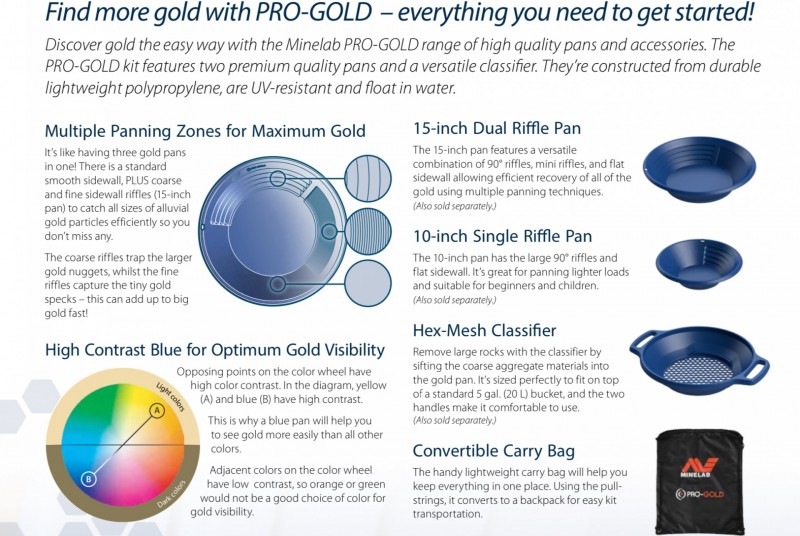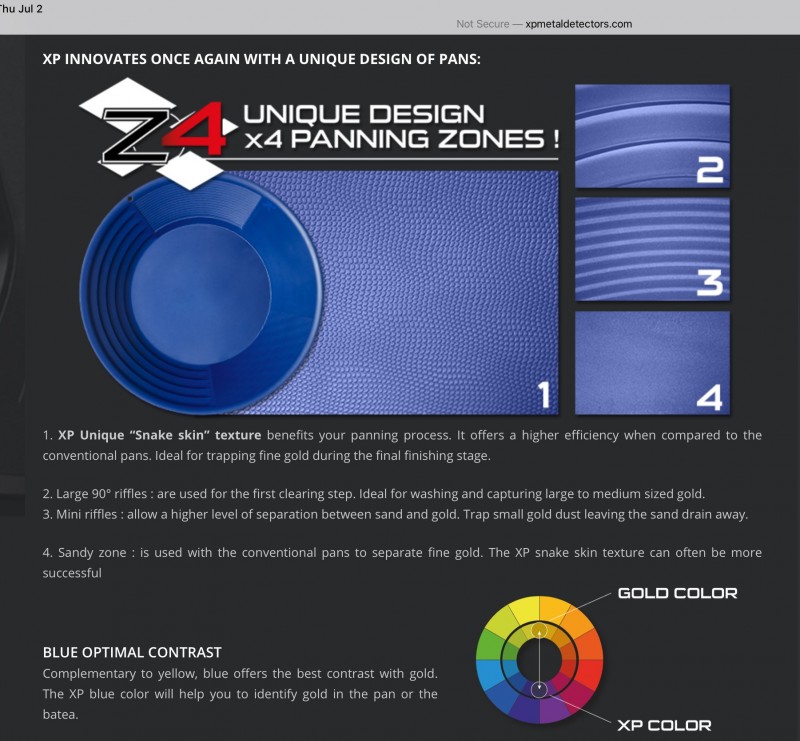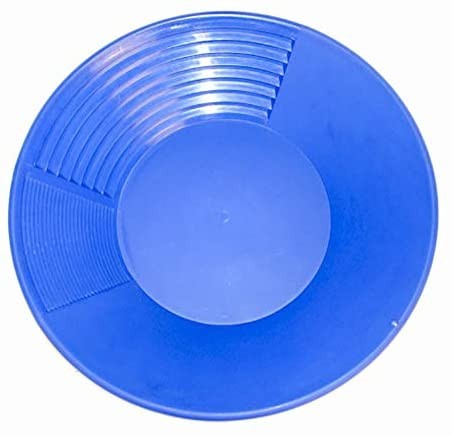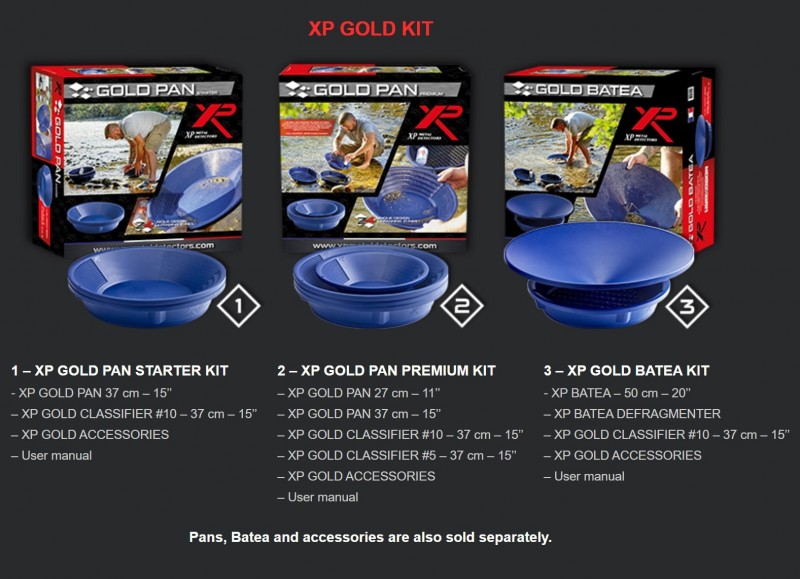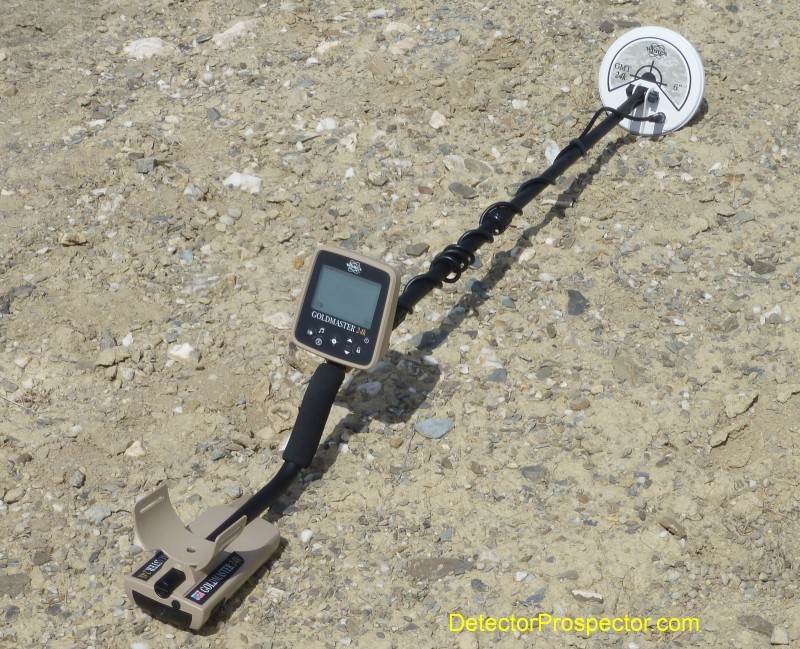-
Posts
19,723 -
Joined
-
Days Won
1,568
Content Type
Forums
Detector Prospector Home
Detector Database
Downloads
Everything posted by Steve Herschbach
-

AQ Day 2
Steve Herschbach replied to cudamark's topic in First Texas - Bounty Hunter, Fisher & Teknetics
The whole point of a PI as far as I’m concerned is to handle mineralization that’s cuts VLF performance by 30% or more. So from my perspective there is no reason to consider a PI for most Florida detecting. Though I imagine there are a few people swinging a GPX with a large coil on the Treasure Coast looking for that extra depth. -

Important Announcement From White's Electronics
Steve Herschbach replied to snakejim's topic in White's Metal Detectors
High frequency raw normalized expands the small target/low conductor range and compresses the high end. So normalized for high conductors (coins) and up-normalized for low conductors/small targets. -

Important Announcement From White's Electronics
Steve Herschbach replied to snakejim's topic in White's Metal Detectors
A machine I really wanted from Whites... DFX running at 48 kHz able to use GMT coils. The ability to run at a separate lower frequency would be nice, but not really needed. What I wanted was the full range SignaGraph tied to 48 kHz operation, with both raw and normalized VDI options. The SignaGraph is a true visual display breakthrough that went underutilized by White’s. I prefer it to the Minelab versions in some ways and having a nugget detector with all the tuning and discrimination options of the DFX would have been something, especially if paired up with MXT ground balancing. The V3i at 22 kHz is close though, so I’ll have to be happy with that. -

Gold Nugget Detecting With The MDT 8000
Steve Herschbach replied to Steve Herschbach's topic in Tarsacci Metal Detectors
See the nugget report here -
I will be using my Impulse with the battery end well out of the water while shallow wading or on the beach, etc. I wanted to get away from wired phones and save the waterproof phones for when I actually need to submerge the machine. No sense putting any more wear and tear on the cable than I need to. So I found a source of relatively inexpensive M8 pigtails and cables, AutomationDirect. Never ordered from them before, but it was easy and cables arrived in two days. I got two pigtails for the headphone 5-pin connector, one straight, and one 90 degree. And I ordered a couple longer 4-pin cables for the power connection, to work with a high capacity power pack I have on order. More on that later when it arrives. I decided to use the 90 degree cable to make an adapter for my new TaoTronics transmitter/receiver box so I can use my Minelab phones, which I like, with all my detectors. There is also a less expensive transmitter only version. M8 5 pin 90 degree pigtail I dug through my pile of adapters and found a spare mono 1/8" extension cable and cut it off, saving the female end for this project. The TaoTronics comes with a RCA to 1/8” female cable that would also probably work for this. I hooked up the 90 degree cable and powered up the Impulse. I randomly hooked up the two wires from the 1/8" socket to the five while having some stereo earbuds plugged in, and found that the brown and gray wires gave me audio in both ears. According to the chart below brown is #1 and gray is #5. I wanted to make very sure there was audio in both ears using the mono socket but with stereo phones plugged in, so good to go there. I cut the cable down short, spliced and covered with shrink tube, and wrapped a little electrical tape on to add some beef. Not pretty but it will work - a typical Herschbach job. I bent the cable under the armrest, and added a stick on square of Velcro to back of the TaoTronics transmitter and the leg stand. I'll add more squares to my other detectors so I can move this transmitter around to whatever I am using. A little tie wrap secures things. Fired it up, paired easily with my Equinox 800 headphones, better audio than the Fisher phones, and frankly the Equinox phones are not the best in that regard. Cheap, super easy... I'm quite pleased with this. I can of course use 1/8" type wired phones or ear buds if I want. I'll make another adapter with the straight connector but go to 1/4" with it, so I can use my Sun Ray Pro Gold headphones without an extra adapter. I'll probably make that cable a little longer than this one, which I wanted as short as possible. If you got the TaoTronics transmitter only box for $20 and this cable for $8.50... well, this is pretty cheap and easy, and will work with a huge number of headphone options. Ironically my new Tarsacci MDT 8000 comes with am M8 to 1/8" adapter with one little problem. Fisher uses a 4-pin connector for the power/headphone combo cable, but then for some reason they use a 5-pin M8 for the headphone only connector. The MDT 8000 headphone adapter is of course 4-pin. I swear they must all have secret meetings to make sure nothing from one detector ever works with another. Click or double click photo for high res version. AutomationDirect M8 Cable Specs pdf
-
I explained on another thread that I was interested in giving the MDT 8000 a spin looking for gold nuggets in trashy locations. All mining camps are places where supplies were hauled in, and none of it left the site, but is scattered everywhere. Miners were not into wasting time, and if possible built their shack, or cabin, or small town, right in the middle of where they were mining. It is not uncommon therefore that there is good gold right in and around some of the trashiest locations in old mining camps. Time has passed and often the wood is gone, rotted away, or left behind when the structures burned to the ground. Old nails and remnants of rusted cans are the most common items, but every manner of metal item that might be needed to survive and mine in the wilderness might be found. There are detectors that might do better on the tiniest gold nuggets than the Tarsacci MDT 18000, but the MDT has a hot 18 kHz mode that is more than sufficient for common VLF nugget hunting tasks. I knew without even trying it that the MDT 8000 would have the sensitivity I was looking for. My main question was whether it offered anything I could not live without for finding gold nuggets in locations littered with ferrous trash. It is also very common in mining areas that the ground is quite mineralized, though that is not something that is universal. I gave the MDT a go at a location where there used to be a shack built on some gold bearing ground out in the Nevada desert. The shack is gone, but there are plenty of cans, remnants of cans, nails, door hinges, bed springs, stove parts, etc. All the metal stuff that was ever brought there, but was not valuable enough to be scavenged as the years passed. The bottom line is the MDT 8000 did not disappoint, and I did manage to find a gold nugget in the limited amount of time I had. The nugget is interesting to me in that after cleaning it weighs exactly 1 gram, as weighed on my very accurate digital powder scales. I find a lot of nuggets that weigh about a gram, but I don't really recall ever finding one that was 100% spot on before. It's probably happened and I did not take notice of it, but this time I did. Gold nugget fresh out of the ground Exactly 1.00 gram! The good news is I did not find anything particularly difficult about using the MDT 8000 on this short test run. I bounced back and forth between mixed mode and disc mode a bit, and far preferred mixed mode. I am big on audio information, usually running detectors in full tones and preferring modulated audio. I also prefer having visual target id information available, I'll take all the tools I can get, but in general I hunt by ear and prefer complex audio. Many people would find the way I run my detectors to be too noisy or busy but with nearly 50 years of detecting under my belt my detectors talk to me and I want to hear everything they have to say. So mostly mixed mode, black sand and salinity off, sensitivity to max, and ground balance manual 668 on this ground. This is admittedly a very preliminary report based on limited use. However, It does not take me long to come to general conclusions about metal detectors. The Tarsacci MDT 8000 is more than capable for the task of VLF nugget detecting, with gold sensitivity as good or better than popular prospecting models running in the 18 - 20 kHz range. While the machine is very capable, there are a couple things that left me shrugging my shoulders a little bit. First, the audio. The tones chosen for revealing non-ferrous targets are extremely high, with the high tone being almost out of my discernible frequency range. Imagine a "tink" sound like tapping a glass bottle with a knife handle. I have some definite high frequency hearing loss, and while the MDT is usable for me, I'd be lying if I said I loved the audio. There are no tone adjustments I am aware of on the MDT, so it falls into the realm of something I just have to live with. There is some ability to modify the response by perhaps trying different headphones looking for those that deliver the tones as they are in the best fashion possible, but that's about it. The other thing is that many discriminating detectors have a common enemy, the flat remnants of steel cans. Think steel cans, thin wall wood stoves, thin steel roofing... bits and pieces of flat steel anything. Coin and jewelry hunters are quite familiar with the challenges presented by bottle caps. If anything the problem is worse in old mining camps due to the volume and variety of this type of trash item. And unfortunately the MDT 8000 is as prone to calling these ferrous targets non-ferrous as are multitudes of other detectors. That's not a knock on the MDT, but it's a bit of magic that if present would make it or any machine stand out in these types of situations. Some problem items, and a small brass item One of the first non-ferrous targets I found with the MDT 8000 is some kind of very small brass.... something. A little pin-like object. I was impressed by this find before I found the gold nugget, and it alone told me the MDT had the hots needed for the job. I can only speculate how the MDT would do with a small coil... no doubt extremely well on very small targets. For now however the coil that comes with the MDT 8000 is the only one available, and since this machine is aimed at the beach market, all the push from other people seems to be for a larger coil. I'd be surprised therefore if a smaller coil is ever made for the machine. The existing coil is very good, though for nugget detecting it would benefit from a solid bottom scuff cover/skid plate, to make it less prone to hanging up on sticks or sharp edged rocks. What about the target id on the gold nugget? I have to admit I was paying no attention to target id at all so do not know. I was just listening for any medium and high non-ferrous tones and digging those. To sum up, I am not here to promote the Tarsacci MDT 8000 as a gold nugget detector and am not saying anyone should go out and get one just for that purpose. I would say however that if anyone has this detector, it is as capable, if not more so, of performing the task as many detectors made specifically for gold nugget prospecting. I plan on giving the detector another and more lengthy workout at another location in the future, though it may be a few weeks before I report back. In the meantime, for anyone with an interest, I recommend watching this video below by Keith Southern. Pay particular attention to the sounds the detectors makes to get an idea of what I mentioned above as regards the tones. And let's close with one more look at that first gold nugget with the Tarsacci MDT 8000. One gram gold nugget found by Steve at trashy site using Tarsacci MDT 8000
-

Equinox 800 Wireless Headphones Paired To 4500
Steve Herschbach replied to Ash's topic in Minelab Equinox Forum
Equinox wireless phones will pair to nearly any Bluetooth audio device, including cell phones and most Bluetooth transmitter adapter devices. I personally just got the TaoTronics transmitter/receiver box so I can use my Minelab phones, which I like, with all my other detectors. There is also a less expensive transmitter only version. -

Garrett ATX Vs Equinox In Mild Ground
Steve Herschbach replied to PPP's topic in Metal Detector Advice & Comparisons
If there is no mineralization, then no need for a heavy, expensive PI, with no discrimination worth mentioning. Most PI detectors do not go deeper than VLF detectors per se; the PI detectors just lose depth far less quickly as ground mineralization increases and ease handling of hot rock. This is especially true of lower power PI detectors running 12V or less, like the ATX. Mild ground, ATX vs Equinox, go Equinox would be my recommendation, especially if you have the 15” coil. -
The area under a coil where a target can be detected can be the size of the coil, or larger, or smaller. It depends on the target size. A small ear ring may only signal in an area the size of a tea cup under a 10” coil. “Fringe“ in my mind is nothing more than “edge of detection depth” where the target fades out and gets weak. Cut a grapefruit in half and put a small plate on top of one half. The plate is the coil. The grapefruit half under the plate is the “detection area“ and the skin or rind is the “fringe detection area.” Whether or not this area can be sensed by an operator depends on whether or not you use modulated audio. Some detectors boost all targets to a solid beep where everything sounds strong. Binary audio. Beep or not. This is good for people with poor hearing. There are no discernible fringe targets since all targets sound the same. They are full strength beep until they get too weak to detect, then nothing. Modulated audio keys the volume and/or pitch to the signal strength. Weak targets have weak audio, strong targets have strong audio. So called fringe targets are the ones that deliver a bare whisper most people walk past. These are larger targets right at the edge of detection depth, or very small targets that are very weak, even if only an inch deep. If I ever say “I dug a whisper target” or a “ very weak target”, it is the same as saying “I dug a fringe area target.” Another way to look at it is that in order to master the detection of really small items, you have to master hunting fringe targets. People new to nugget detecting are often poor at this, and can only hear strong targets. Part of the problem is the many weak ground signals that confuse them, so they only go for the obvious targets. Look in their pouch, and all they have is large stuff, which when nugget detecting usually means trash. To do well a person has to develop an ear for softer “smaller” sounds, that mean small gold nuggets, or large deep nuggets that barely whisper. In any nugget patch, the first gold to go away are the nuggets with big, easy signals. I personally do not like to to use a detector without modulated audio. Binary audio delivers little useable target information, and so for me I prefer modulated full tones for maximum target information. Though if you are digging everything anyway, a case can be made for monotone binary audio. Beep, dig. Long story short, showing the detection area as the same size as the coil is not automatically inaccurate. It depends on the target size used in the example, and by definition you have to assume they size they used produced the detection area displayed. They also need not get into “fringe” areas if the model used employs binary audio, which produces sharp, defined edges to the detection area, instead of the “fuzzy” edges seen with modulated audio. The fuzzy zone being the fringe area. DD vs Concentric Coils
-
I guess whatever you are trying to say is flying completely over my head!
-
The thread is over two years old. It was a ton of work making the conversion, but very necessary to “future proof” the website. The main thing I don’t have to worry about is keeping up with the never ending parade of new devices and browser changes. I’ve been very pleased with the result and glad I made the leap.
-

First Hunt With The AQ
Steve Herschbach replied to schoolofhardNox's topic in First Texas - Bounty Hunter, Fisher & Teknetics
A lot of bottle caps will have a ferrous “edge” to the signal if using tones. But some just sound good so you have to dig them. My deepest signal so far was a quiet little tone in sand. Over ten scoops later there was the bottle cap. I started getting the ferrous edge when I got close, but by then I was determined to see it with my eyeballs. -

First Impressions Of The AQ
Steve Herschbach replied to cudamark's topic in First Texas - Bounty Hunter, Fisher & Teknetics
They changed the headphone cable after Joe got his. Mine was nixed and ready to ship, and they pulled it aside at the last minute to do whatever changes were made. I think I have unit #3? -
Great test and I learned some things. I actually thought the F75 would show up a little better than it did in all metal mode. The good news is you have confirmed that my having an Equinox and having parted ways with the F75 is even better than I thought. Very interesting the difference in Field 2 and Gold Mode 40 kHz in particular. Looks like I need to do some more investigation myself. Thanks for going to all that effort!
-
Here is a tiny part of a long and complicated story. As I've mentioned, I was a White's dealer. White's had a few very powerful distributors. They also had an old contract with Kellyco they came to regret but could not get out of, leading to some strange shenanigans, but that is another story. Enter the Internet. White's basically feared the internet, and prohibited most dealers initially from even mentioning they were dealers for White's on the internet. The excuse was that they were trying to protect the dealers from undercutting each other. But what they were doing was favoring the distributors, who also just happened to be dealers. They could sell via the internet, but the lowly dealers could not. Dealers were in effect having to compete with their own suppliers. People tend to revere Jimmy Sierra, but he had a huge chunk of the White's pie, and did everything he could to protect his slice, at the expense of everyone else. A big part of what took White's down was having distributors way past the day when they were still needed, but old relationships and contracts had them over a barrel to some extent. Eventually White's listed dealers on their website, and the most you could do as a dealer was place a White's logo on your website, which linked to the White's dealer info page on the White's website. You still could not do direct sales on your own website. In theory you were allowed to sell a small number of detectors outside your immediate local area, but you could also be sure somebody would complain if you did. White's wasted a huge amount of time chasing down and chastising dealers for the crime of selling their detectors on the wrong side of some line. Then White's tried selling machines on their own website, and gave a kickback to the dealer into whose area they were selling. Having local dealers but then getting between the dealer and the local customer. How weird is that? It was insanity. I was a multiline dealer at the time, and a very large White's dealer based purely on the numbers I moved locally. I was also early in seeing the potential of the internet, and drove many more sales via our website. Of Fisher, Garrett, Minelab, Tesoro, and eventually XP. But White's was basically invisible on our website as I simply went with what I could sell online without getting hassled... at the expense of possible White's sales, since they were not even represented. By the time White's lightened up on dealers it was too late. I'm sure it was Jimmy fighting all this to the bitter end that had a lot to do with White's finally cutting ties with him. The net effect of all this distributor control and full scale suppression of dealership selling via the internet was predictable. Dealers switched to emphasizing other brands. Any casual consumer Googling for metal detectors would hardly know White's existed. It was just not benign neglect of the internet, it was active suppression of the greatest marketing tool ever invented. This was one reason why newer people getting into being dealers ignored White's in favor of other companies that allowed internet sales. Many newer dealers were only becoming dealers to take advantage of the internet, and were not interested in regular storefront sales. White's cut themselves out of the loop.
-

Which Gold Bug Is This? Pics Attached.
Steve Herschbach replied to N7XW's topic in Detector Prospector Forum
See the link phrunt provides above. The owner is misrepresenting or does not know what he is selling. Bad sign. It is not a Gold Bug 2, but earlier model. Runs at low gain 19 kHz Nowhere close to the Gold Bug 2, which replaced it. But decent on larger nuggets in bad ground. I would have to argue that not even a CZ3D is desirable/better than newer options. There is an analog nostalgia crowd that might argue such. I think my wired rotary phone made more reliable phone calls than my cell phone. But I’m still not going back to a rotary phone. -

Who Has The Impulse Aq?
Steve Herschbach replied to Ferrous Grump's topic in First Texas - Bounty Hunter, Fisher & Teknetics
The 2.5 hours is first use only. Should get well over 3 hours on the next go. -
Keep in mind that many of the most popular PI beach detectors sold for decades had/have no ground balance. They generally rely on the lower pulse delay anywhere from 10 uS to 20 uS to act as an inherent salt and ground canceling setup, with threshold autotune doing the rest. The White’s Surf Dual and Garrett Sea Hunter, for instance, do not ground balance.
-

White’s Australian Dealer?
Steve Herschbach replied to Steve Herschbach's topic in White's Metal Detectors
One possibility..... all White’s dealer restrictions are now gone. What can White’s do... cancel a dealer for shipping out of area? You might try some U.S. dealers and see if any will ship to you. -
I had to chuckle when I saw the advertising details page. Yes, amazing new concept! The Batea at least is something really different you do not see often. XP 2020: Minelab 2016: Not that Minelab was first to do a blue three stage pan either. They were not. Keene was selling these even earlier. But the XP ad sure looks similar to the Minelab ad, right down to the color wheel.
-
Click on the button below and discover the features and innovation! XP Metal Detectors are launching a brand-new range of Gold Prospecting products.Take your Gold hunting to another level with our new range of XP Pans / Classifiers / Batea / Accessories. The XP Gold prospecting kit will be the perfect addition to your XP ORX high frequency metal detector – The ORX has proven to be one of the most efficient Gold detectors available on today’s market, offering performance and value for money. The XP Gold Pans, Classifiers, Batea and accessories offer the same outstanding quality found in all XP products. To get the BEST results you need to use the BEST kit ! XP Metal Detectors have worked alongside some of the industries most respected gold prospecting professionals, they have helped design and develop our Gold Panning kits, to ensure you have the very best equipment in your hands. Includes the first 21st century batea!
-
My first metal detector in 1972 was a White's Coinmaster 4. I became a White's dealer in 1976. Over the years I owned the following: White's Beachhunter ID, White's Coinmaster IV, White's Coinmaster V Supreme, White's DFX, White's Goldmaster, White's Goldmaster II, White's Goldmaster V/SAT, White's Goldmaster 3, White's Goldmaster 4/B, White's Goldmaster 24K, White's GMT, White's M6, White's MXT, White's MX Sport, White's Surfmaster II, White's Surf PI, White's Surf PI Pro, White's Surf PI Dual Field, White's Sierra Pulse Pro, White's TDI, White's TDI SL, White's Vision, White's V3i And as a dealer I "borrowed" and played with countless more models. Right as of this moment I still have a DFX, V3i, and Goldmaster 24K I got in the fall of 2018. It's just now sinking in that after 48 years of using White's metal detectors, I have probably officially purchased my last new White's. I guess it is not impossible yet somebody could purchase the company and somehow take things on to new and improved models. Unfortunately, I just do not see that as being very likely. The name may continue, but White's as an industry leader is probably nothing more now than a memory. It's hard to believe that a company that produced something as sophisticated as the V3i in 2009 is now done.... I was still harboring a hope that somehow a V4 would see the light of day. In fact I figured they either pull a rabbit out of their hat, or it was over. Unfortunately it proved to be the latter. I do know one thing. My V3i is in pristine condition, and I am going to treat it with kid gloves now. If there was ever a detector that might become a collectors item, the V3i is it. I do not think we will see anything remotely like it ever again. The Goldmaster 24k is a very good detector, and thanks to Tom Boykin I got to use it early on and write my last big review of a White's detector. I always felt a little bad about the MX Sport debacle, so it was nice to end things on an upbeat note. A picture of my last detector from White's Electronics, quite a difference from my first "big box" Goldmaster in 1973.
-

Simplex Optional Coils Now In Production
Steve Herschbach replied to Sven1's topic in Nokta / Makro Metal Detectors
Large coils cover more ground and get good depth on coin size and larger targets. However, when multiple items are under the coil at once, this can confuse the detector. A small coil helps better separate targets where they are close together, like a picnic area. Small coils also enhance sensitivity to smaller items like ear rings. The trade off is the small coil does not cover as much ground, or reach quite as deep, as the larger coil. Lots of details and more reference material here


